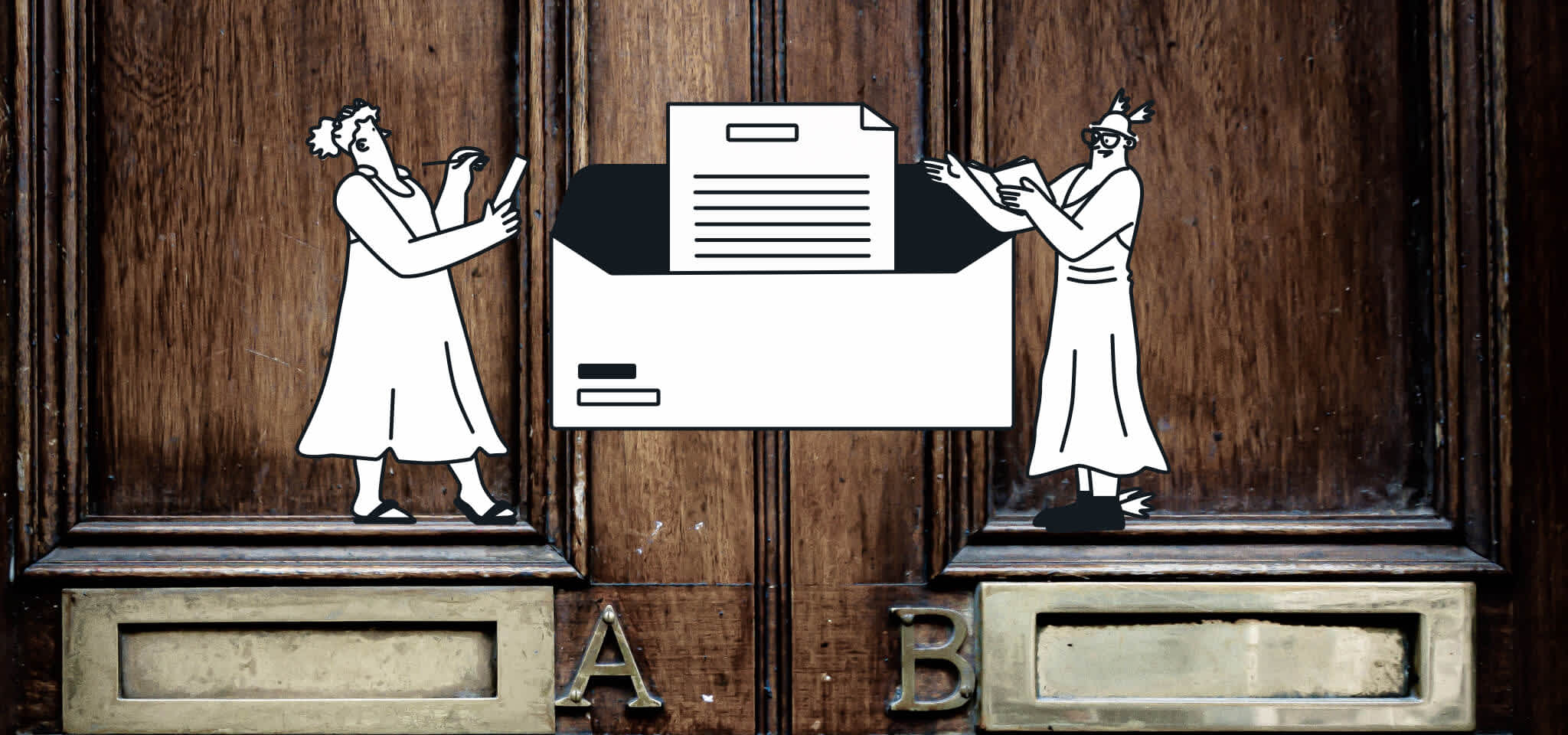Email best practices
What is a good email open rate and how to improve it
Open rates are one of the most important metrics used track email marketing success. Learn how to measure and increase your open rates.

PUBLISHED ON
We’ve all been there; standing in a cocktail bar with friends, talking about email marketing strategy when the topic of open rates comes up. You, knowing that your average of 8% comes in well under colleague Jerry’s 20%, sheepishly decide to excuse yourself. Now, while we might not be able to help with your social anxiety we can help you to improve email open rates.
Table of contents
What does open rate mean?
Let's start with the basics: an open rate is the proportion of emails that have been opened by your recipients after sending out a campaign. This percentage is calculated simply as the number of emails opened divided by the number of emails delivered.

The number of emails delivered is the number of emails that have reached your recipients' inboxes, out of all the emails that you sent. Let’s run through some other common email marketing KPIs you might come across when analyzing open rates:
Term | Description |
|---|---|
Term | |
Click-through rate (CTR) | Click-through rate (CTR) is the percentage of recipients who clicked on at least one link within your email, indicating their level of interest in your content. In simpler terms, it shows how many people who opened your email went a step further and clicked on a call to action (CTA). |
Description | |
Click to open rate (CTOR) | Clic�k-to-open rate (CTOR) is the percentage of subscribers who open an email and then click on a link within it. Slightly different to CTR, as CTOR looks solely at recipients who opened an email, not just received it. |
Unique open rate | Unique open rate is the percentage of individual subscribers who open your email at least once, regardless of how many times they actually click it open. |
Bounce rate | The bounce rate in email marketing is the percentage of emails that fail to be delivered to a subscriber's inbox, often due to invalid addresses or full mailboxes. |
Unsubscribe rate | The unsubscribe rate in email marketing is the percentage of subscribers who choose to opt-out of receiving future emails, indicating a loss of interest or trust in your brand's communication. |
What is a good open rate?
It’s generally accepted that a good average open rate is between 25% and 35%.
However, it’s important to differentiate between open rates for your transactional emails (purchase confirmation, password resets, etc.) and marketing emails (newsletters, promotional campaigns, etc.).
As consumers, we place greater importance on transactional emails because they will, for example, allow us to immediately reset passwords and access the content we want. This explains why transactional emails generally have higher open rates. It is important to note that not everyone necessarily opens these transactional emails (e.g. an "order confirmation") since the message may not be crucial to them at that time.
While monitoring transactional email open rates is important to ensure nothing out of the ordinary is happening, it’s more important to pay attention to marketing emails since this is where you can have a much bigger impact.
However, this is a lot easier said than done.
According to data from our new report, The path to email engagement 2024, 73% of subscribers confirmed they receive more than 10 emails per day, with 37.7% believing they receive over 20 emails per day. The challenge though comes with this next finding: 49.2% of consumers say they only open a few emails from brands per day and 8% won’t open any at all.
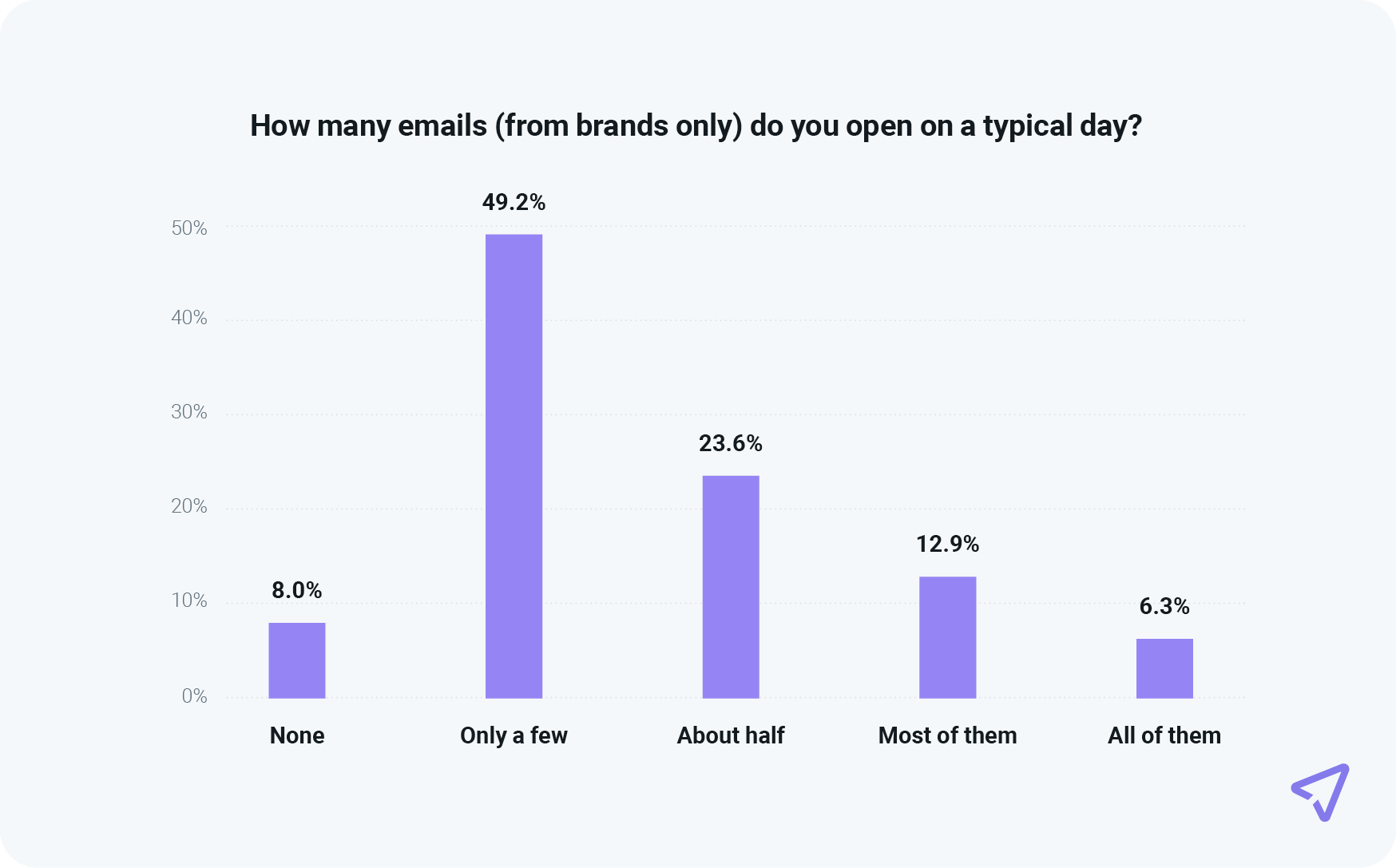
As if the job wasn’t hard enough already, right? But back to the original question, the honest answer is that open rates for marketing emails depends on several factors:
Size of your contact list
Sending frequency
Industry
Implementation of email authentication best practices
Email content and design
Sectors known to have great open rates (over 25%) include religious organizations, government, artists, and sports teams while those that come in is lower (less than 20%) include consulting, gambling, personal care, and e-commerce. You can find 2024 industry benchmarks for open rates here.
These are just general guidelines, what’s important is to not only understand where you rank amongst your competitors but more important how you rank against your own campaigns last week, or last month. Then, you can start to implement new tactics and strategies to start to move the needle in the right direction.
What you can do to increase your open rates?
The only elements visible in the inbox before you open a message are always the same: the sender's name, the subject of the email, and the pre-header. Below is an example of Mailjet’s customer Product Hunt’s daily digest, an email sent to millions of users every day.

So, to boost your open rates, look at these elements carefully to encourage your readers to take action: devise an intriguing subject line, add an engaging hook in your pre-header, choose a clearly identified sender who will instill confidence in recipient.
Too many brands will put generic sender names such as “Marketing Team” that don’t stand out, or they will create subject lines that give too much away. Remember, the first goal is to get subscribers to open your email, not to sell anything. Once they’ve clicked through, then you can start thinking about what content to add.
Whatever happens, we cannot reiterate enough: test different approaches to see what works for your audience.
Increase open rates with A/B tests
You can use A/B tests to identify which version performs best. This involves sending several versions of the same email to a sample of your contacts list. There are two approaches you can take with A/B testing, depending on whether you are looking to send the best email to the most people right now, or if you continuously trying to learn how to improve your results.
The first method is to send an A/B test initially to a subset of your contacts (for example 40% as shown below), and the version that generates the best statistics is then automatically sent to the rest of the list a few hours later.
At Sinch Mailjet, we recommend setting the delay time to a minimum of 5 hours before the remainder of emails are sent to ensure you have received all the necessary data.
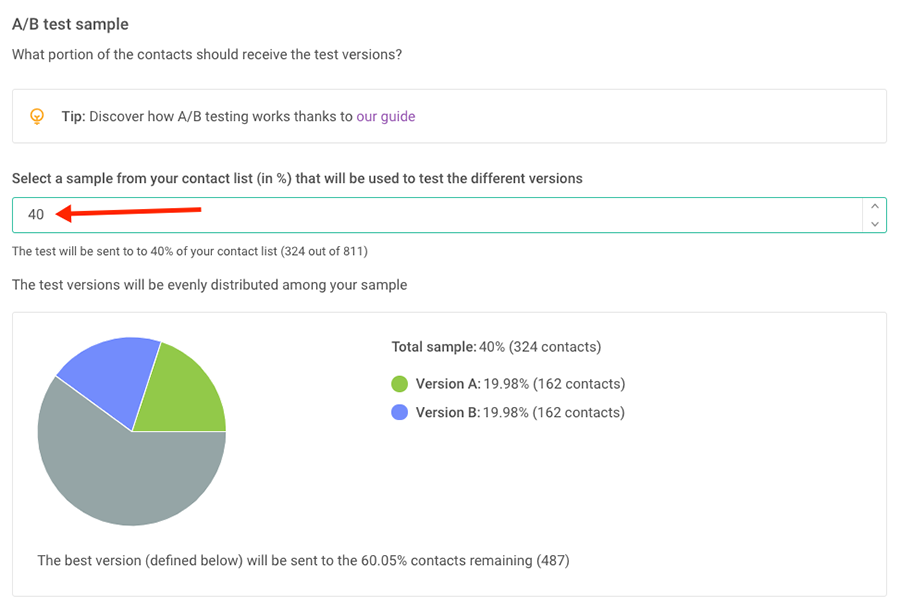
However, if you need to get all your emails out immediately but still want to test different subject lines or pre-headers, there is another approach. When you conduct an A/B test, this time instead of sending to a subset of the recipients, you can send to 100% so that your entire list will receive your message when it’s sent.
While you may not be optimizing that exact email, you will be able to review the data afterwards and make improvements on how you approach subject lines, pre-headers, and sender name in the future. You could, for example, experiment with emojis in the subject line, personalization in the pre-header, and creative names for your sender.
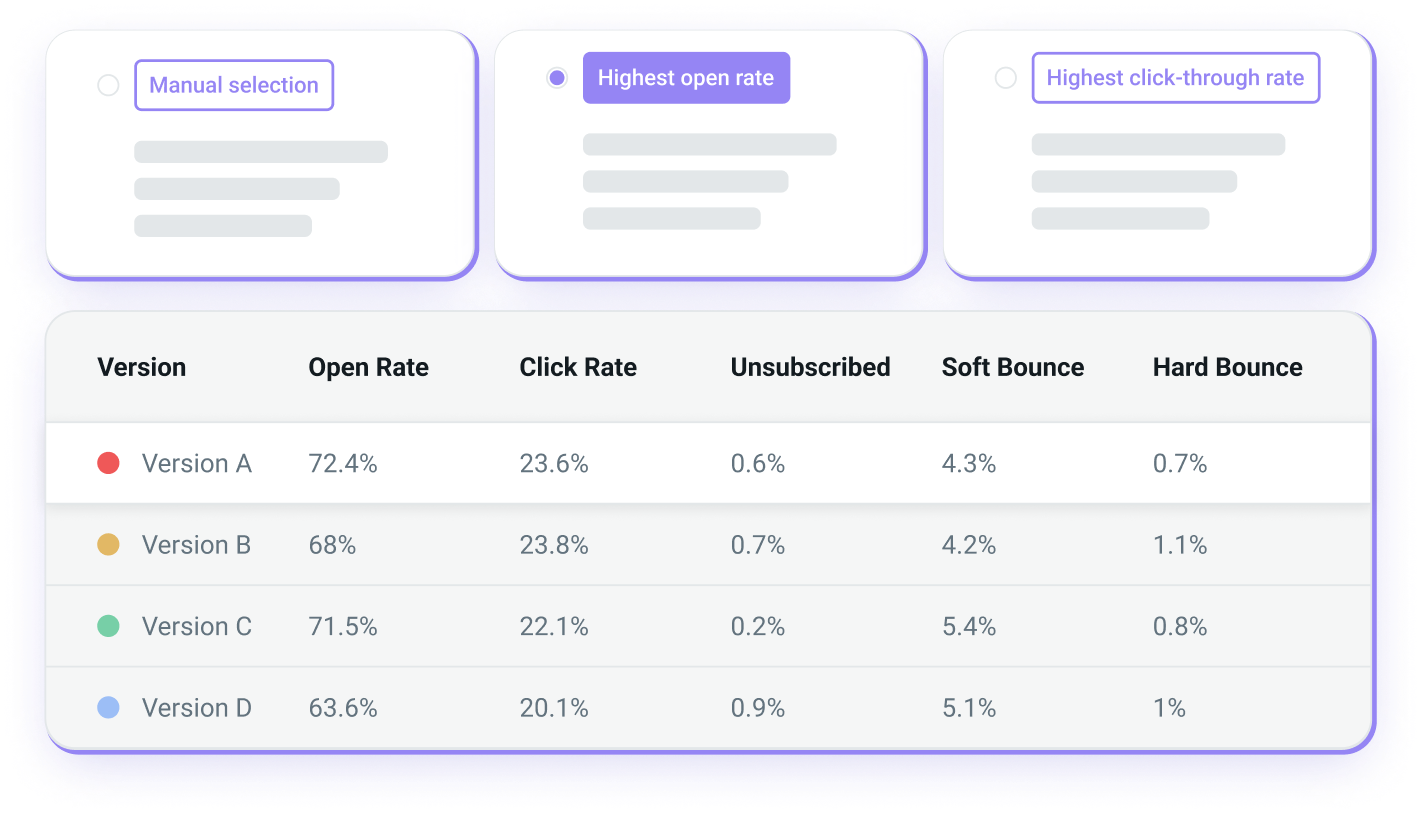
Whichever variable you are testing, always make sure you keep the other variables constant if you want to be able to compare the data. If, for example, you want to test the subject, the sender and pre-header must be the same in the two versions of your campaign.
Increase open rates with clean email lists
Your email list is also a key factor in determining your open rate. You might think that the more contacts you have on your list, the higher your open rates will be. Unfortunately, it doesn't work that way - in fact, quite the opposite.
Instead of focusing on growing your email list at all costs, it would be far more effective for you to ensure your current subscribers are engaged. How does this work? First, it’s important you gather the express consent of your contacts (especially now that the GDPR is in effect) to contact them. This can be done through a double opt-in confirmation email. Then, make sure you clean up your listsby identifying subscribers who have not opened your emails recently and remove them from your lists. That may be scary but let's be honest: if they have not opened your messages in over 6 months, you’ve already lost them.
In Sinch Mailjet, you can create a segment that automatically filters out those users who meet a specific criteria, such as not opening an email in a few months. Simply select the contact list, and the filter, to carve out those users who you no longer want to contact.
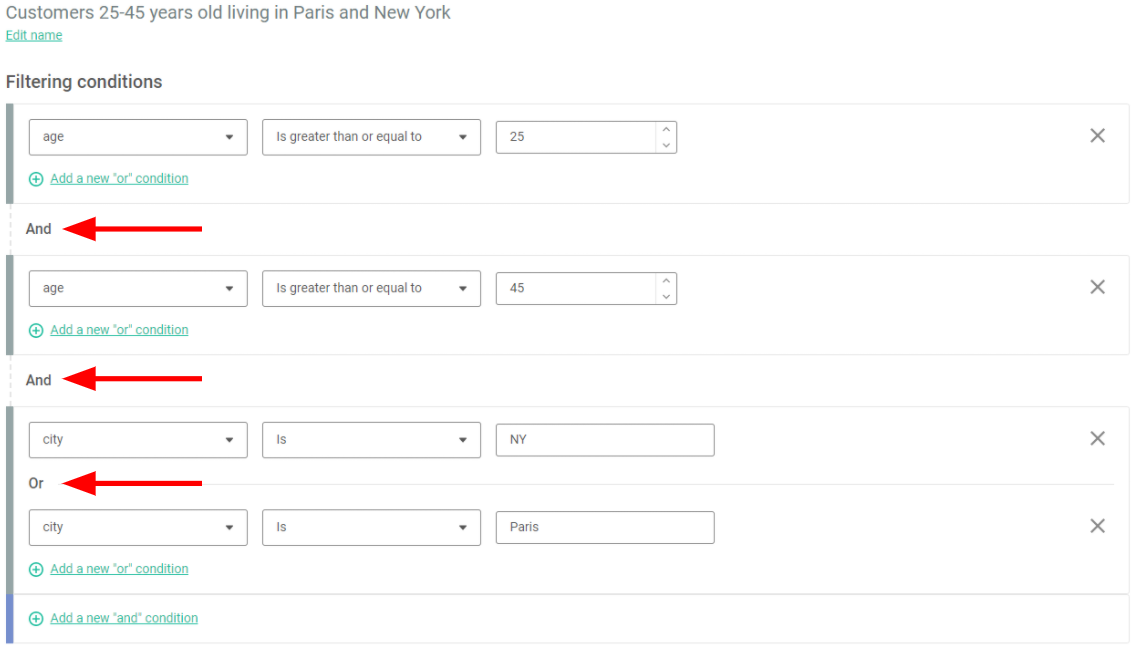
When many of Sinch Mailjet’s enterprise customers first join, the first thing our Customer Success team does is clean up their email lists. We’ve seen contact lists drop from 1M contacts to 100K while total opens actually increased. Not only did open rates increase ten-fold, but again, total opens increased, too. This primarily because when you are sending to a highly engaged list, your deliverability rates increase.
Key takeaways
Here is a summary of the main points to bear in mind about the open rates of your email campaigns:
Always monitor your open rates because this is a good indicator of the overall effectiveness of your email strategy.
Compare your open rates with those of companies working in the same industry as you, but try to aim for between 25-35%.
Even more important than comparing to your competitors is comparing to your past results. Always look for positive growth.
Take pride in the sender address, the subject line, and pre-header, and above all, test these different elements with A/B Tests.
Ensure that the contacts you add to your lists have given their express consent to receiving your communications and if you are not getting positive engagement, never hesitate to clean your lists and delete unengaged contacts.
We’re off to work on our engagement strategy - what are you going to do to increase your open rates?





